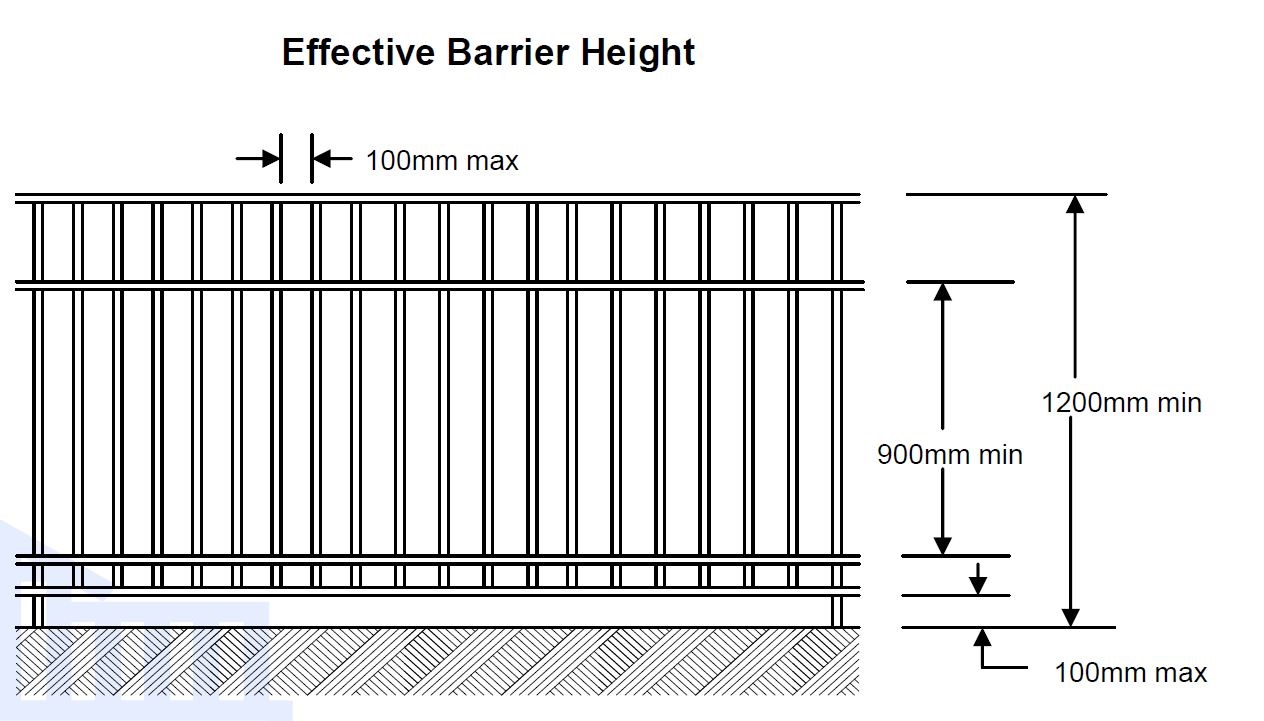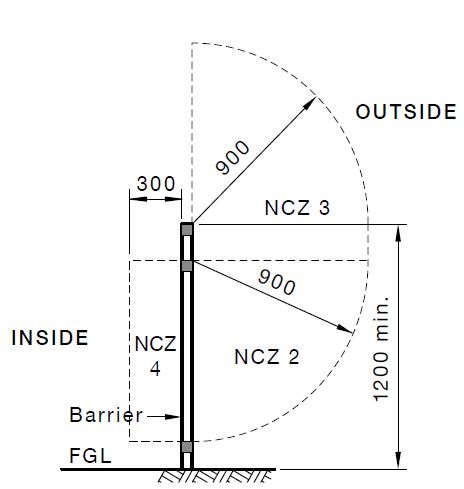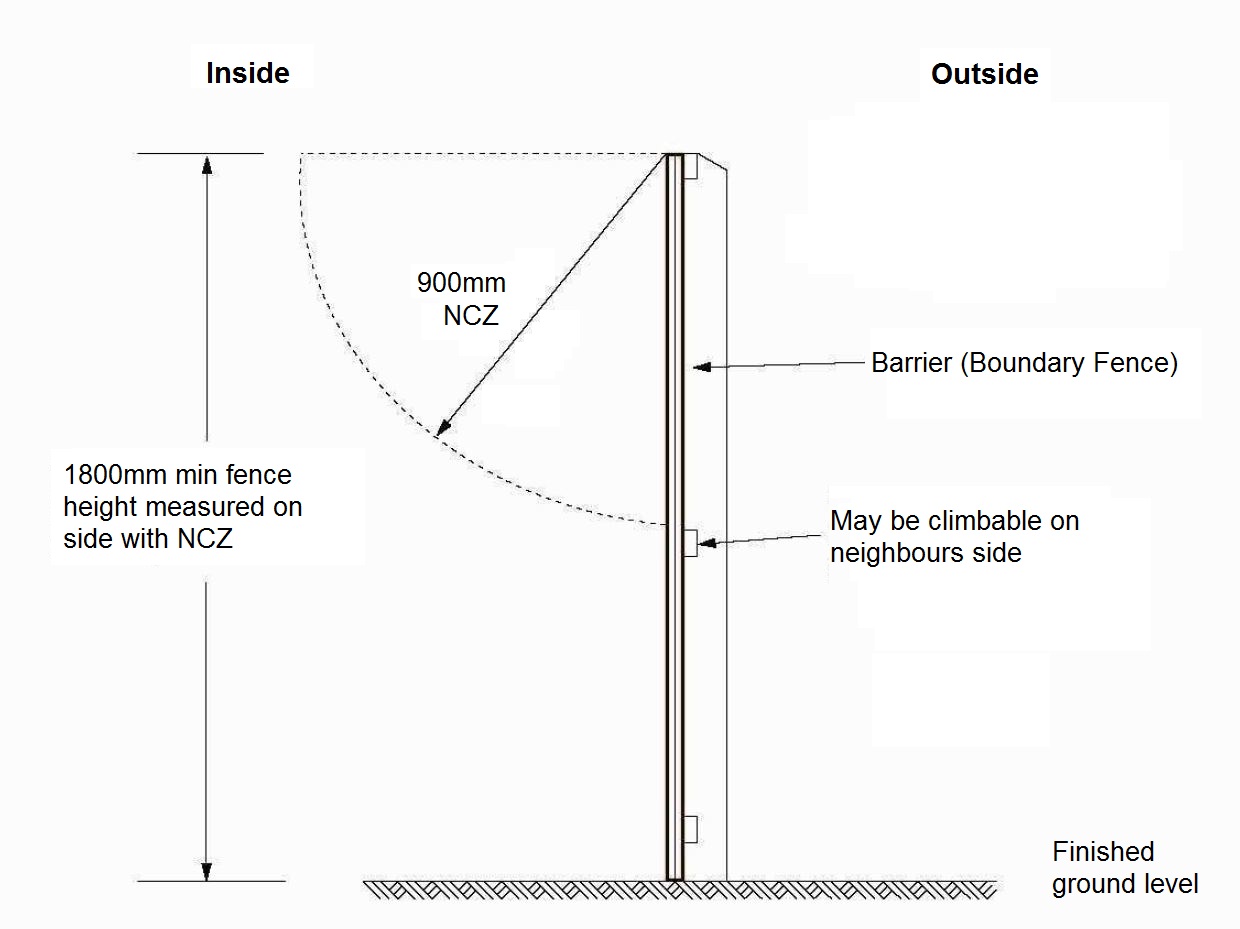Information
-
Address
-
SP
-
Investigation Type
- Complaint
- Mandatory - tourist & visitor accommodation or 2 or more dwellings
- Request for compliance cert
- BC or DA
- Compliance certificate referred to by Private Certifier
-
Has the swimming pool got development consent
- Yes
- No
- further investigation required
- Yes - recorded on previous Inspection Audit
-
Does the swimming pool comply with the SEPP (exempt development): 1. Not on or in a heritage item 2. Be for residential use only 3. Located in the rear yard and at least 1m from each boundary lot 4. NOT EXCEED 2000L IN CAPACITY 5. Not require structural work or impact on the structural stability of any building.
- Yes
- No
- further investigation required
- Yes - recorded on previous Inspection Audit
-
Create CRM for Unauthorised Works.
Continue inspection of swimming pool barrier. -
DA/BA Number
-
Has the swimming pool been registered under Part 3A of the Act
- Yes
- No
- further investigation required
- Yes - recorded on previous Inspection Audit
-
Registration Number
PROPERTY & POOL INFORMATION
-
Property Type
- Private Dwelling
- More than 2 Dwellings (Mandatory Inspection)
- Tourist and Visitor Accomodation (Mandatory Inspection)
-
(S12(c) SPA 1992 ) Must not contain any structure apart from the swimming pool and such structures (such as diving boards and pool filtration plants) as are wholly ancillary to the swimming pool)
Non-Compliance with previous Australian Standards
-
What standard was applicable at the construction or installation of swimming pool?<br>(cl 30 Regs 2018)
-
Reason for upgrading barrier to 2012 standard
- Barrier has been substantially altered or rebuilt
- barrier has not continued to comply with the standard applicable at the time of construction
-
Pool Type?
- Above ground
- Inground
- Portable or Inflatable
- Pool & Spa
- Spa Only
- Indoor Pool
- Indoor/Outdoor
-
(1) Is the Spa covered and secured by a LOCKABLE child-safe structure such as a door, lid or mesh?<br>(Must contain a device in which it is locked and unlocked by a key or combination) (cl 9 Regs 2018)
-
(2) Is the child-safe structure (door, lid or mesh) of substantial construction and having no openings greater than 100mm? (cl 9a Regs 2018)
-
(3) Is the structure (door, lid or mesh) FASTENED to the spa pool by a device that is also of substantial construction and contains no gaps greater than 100mm? (cl 9b Regs 2018)
-
Walls of above ground swimming pools are not classified as an effective barrier as outlined in the Building Code of Australia NSW variation
ENTIRE BARRIER
-
-
(1) Child resistant barrier must be in good repair - (S15 SPA1992)<br>Has the barrier (including the gate & boundary fence) been maintained and is in a good state of repair? (eg. no holes, missing panels or broken rails)
-
(2) Is the Barrier a permanent structure and constructed from a durable material (free of sharp edges, sharp projections and similar hazards) cl. 2.1 A.S.1926.1-2012
-
(3) Features and objects near barrier - (cl 2.3.1 AS1926-2012) <br>Steps, retaining walls, objects or level changes are not located within 500mm of the barrier that reduce the 1200mm height?
-
(4) Ground clearance - (cl 2.3.7 AS1926-2012) <br>The gap between the bottom of the fence and gate is no more than 100mm measured to the finished ground level and the surface beneath the barrier is permanent and not easily removed or eroded.<br><br>
-
(5) Vertical components - (cl 2.3.7 A.S.1926.1-2012)<br>The gaps between all vertical components do not exceed 100mm
-
Does the barrier use perforated or mesh materials?
-
Mesh openings are no greater than 13mm<br>
-
(6) Perforated material or mesh - (cl 2.3.2 (b) AS1926-2012) <br>Mesh openings are no greater than 100mm and the fence is a minimum of 1800mm in height, measured from finished ground level
-
(7) Strength & rigidity of openings - (cl 3.1 AS1926-2012) Do the child resistant barrier panels and gate show evidence of passing requirements for the strength and rigidity of openings?
- Not Applicable not an open style fence
- Yes - vertical bars show no sign of flex that will effect the opening size.
- Yes - Panels are stamped with AS 1926-2012
- Yes - Test device not used - certification produced
- No - test device used and failed at less than 150N
- No - Opinion of authorised officer is that the vertical members would fail a test using the testing device
-
Add media
INTERNAL BARRIER
-
(8) Internal barrier height - (cl 2.1 AS1926-2012)<br>Is the Pool fence within the property (including the gate) a minimum 1200mm on the outside of the barrier from finished ground level (FGL).<br><br><br>
Non Climbable Zones (NCZ) clause 2.2.2 A.S.1926-2012. No handholds or footholds, objects or plants that will facilitate climbing. Note: clause 2.2.3, internal barriers 1800mm or greater do not require a NCZ and may be Climbable on both sides clause 2.2.2, top surfaces sloped at more than 60 degrees to the horizontal plane are non-climbable.
-
-
(9) NCZ 1<br>Is the 900mm vertical plane on the outside face of a barrier (minimum of 900mm between the highest horizontal member at the bottom of the barrier and lowest horizontal member at the top of the barrier) clear of any handholds or footholds, objects or plants that will facilitate climbing<br>(This also applies to barriers and walls adjoining at more than a 90 degree angle - cl 2.2.5 A.S.1926.1/2012)
-
(10a) NCZ 2<br>Is the outside of the internal barrier within a 900mm radius measured out and down from the top of NCZ 1 clear of clear of any handholds or footholds, objects or plants that will facilitate climbing? <br>(This also applies to barriers and walls adjoining at more than a 90 degree angle - cl 2.2.5 A.S.1926.1/2012)
-
(10b) NCZ 3<br>Is the outside of the internal barrier within a 900mm radius up from the top of the barrier clear of any handholds or footholds, objects or plants that will facilitate climbing? (Climbable objects such as trees)
-
(11) NCZ 4 required on all barriers with vertical openings 10-100mm in width.<br>Is the area within 300mm inside the barrier clear of any handholds or footholds, objects or plants that will facilitate climbing or increased ground level that are less than 900mm from the lowest high horizontal component.<br>
Glass Barriers
-
Does the barrier use glass panels?
-
(12) Glass Barriers (cl 2.3.3 AS1926-2012)<br>Has certification been provided that any new glass barrier and it's components have been designed selected AND installed in accordance with A.S. 1288
Gate unit and latch fittings
-
(13) Operation of gates - (cl 2.4.1.1 AS1926-2012) <br>The gate units only open outwards (away from the pool area)
-
(14) Gate swings open without obstruction - (cl 2.4.1.1 AS1926-2012)
-
(15) Self Closing Device - (cl 2.4.1.2 AS1926-2012) <br>The gate unit is self-closing and self-latching from any position with a stationary start (including resting on the latching device)?
-
(16) Security of closure - (cl 2.4.1.3 AS1926-2012) <br>The gate cannot be pulled open or create opening greater then 100mm once latched?
-
(17) Location of latch - (cl 2.4.2.2 AS1926-2012) <br>Is the latching device located a minimum 1500mm above ground level, measured to the start of the release point?
-
(17a) Is the latch situated on the inside of the gate (cl2.4.2.2(a) AS1926.1-2012)
-
(17b) Is the latch in such a position that from the outside of the barrier you are required to reach over or through the barrier at a height of not less than 1200mm above FGL or not less than 1000mm above the highest lower horizontal member? (cl2.4.2.2(b) AS1926.1-2012)
-
(17c) Is the latch at least 150mm below the top of the barrier (or edge of any hand hole if one is provided) (cl2.4.2.2(c) AS1926.1-2012)
-
(17d) Is there no gaps greater than 10mm within 450mm of the latch (Cl 2.4.2.3 AS1926-2012)
-
(18) Gate hinges - (cl 2.4.3 AS1926-2012) <br>Are all hinges which protrude out from the gate with a horizontal top surface (depth greater than 10mm) spaced a minimum 900mm apart?<br><br>OR<br><br>Alternatively, fitted with an angled capping (minimum 60* degrees) to prevent foothold potential. IF THE OPENING BETWEEN THE GATE POST AND THE GATE STILE IS NO MORE THAN 10mm APART.
BOUNDARY BARRIERS (allotment boundary fence)
-
Do boundary fences form part of the pool barrier?
-
-
(19) Features and objects near barrier - (cl 2.3.1 AS1926-2012) <br>Steps, retaining walls, objects or level changes are not located within 500mm of the boundary barrier that reduce the 1800mm height?
-
(20) Boundary barrier height - (cl 2.2.4 AS1926-2012) <br>Are all boundary fences forming part of the child resistant barrier a minimum 1800mm high measured from the inside of the pool area? (Within an area of 500mm from ground level adjacent the fence)
-
(21) NCZ 5 - (cl 2.2.4 AS1926-2012) <br>Is the inside of the boundary fence within a 900mm radius measured down from the top of the barrier, clear of any handholds or footholds, objects or plants that will facilitate climbing? ( eg; Climbable fence sections, trees or other structures)
-
(22) Intersecting boundaries - (cl 2.2.5 AS1926-2012) <br><br>Where a boundary fence intersects with a fence less than 1800mm, is the top rail or surface of the intersecting fence which falls within NCZ5 a maximum of 50mm wide at any point and intersects at an angle between 45 and 135 degrees.<br><br>Note: If the top width is greater than 50mm, the height is required to be a minimum of 1800mm and return a minimum of 900mm from the boundary fence.
DWELLING OR ASSOCIATED BUILDINGS that form part of the pool barrier
-
Does the dwelling or associated buildings form part of the pool barrier at any point?
-
(23) Child- resistant openable portion of window - (cl 2.6 AS1926/2012) <br>Are the windows with a sill height of less than 1800mm opening into the pool area protected by one of the following:<br><br>a) Windows must be restricted to max openings of 100mm with a device requiring a tool for removal<br><br>OR <br><br>b) Windows must be totally covered by bars or metal screen ( with gaps no greater than 100mm) and fixed to building with fasteners that can only be removed by a tool.<br><br>Note: If windows are required to meet ventilation requirement as per BCA they must be protected by child safe grills and mesh unless adequate alternative provisions are made to meet ventilation requirements.
-
Does a door from a residential building form part of the swimming pool barrier.<br><br>
-
Is the pool or part of the pool indoor?
-
(24) Note : Child-resistant doorsets shall only be installed for access to indoor pool and the indoor part of an indoor/outdoor pool (cl 2.7 AS1926/2012)
-
(25) Child resistant doorsets - (cl 2.7a-b AS1926/2012)<br>Does any door that forms part of the barrier, self-closing and self-latching from any position with a stationary start (including resting on the latching device)?
-
(26) Child resistant doorsets - (cl 2.7d AS1926/2012)<br>Is the latching device for any door that forms part of the barrier, located on the outside of the door and a minimum 1500mm above the finished floor level?
-
(27) NCZ 1 - Is the 900mm vertical plane on the outside of the door clear of any handholds or footholds, objects or plants that will facilitate climbing<br>(the top of NCZ1 shall be 1200mm or less above the floor - cl 2.7e A.S.1926.1/2012)
-
(28) There are no pet doors placed in the door (cl 2.7g AS1926/2012)
-
(29) Does the door open away from the pool (cl 2.7h AS1926/2012)
Retaining Walls
-
Does a retaining wall act as part of the safety barrier
-
(30) Other barriers - (cl 2.5 AS1926-2012) <br>The retaining wall does not slope away from the pool area by more than 15 degrees? (measured from approach side).<br><br>Note: NCZs still apply
Balcony
-
(31) Balcony balustrades - (cl 2.8 AS1926.1/2012)<br>Does any balcony that protrudes into an NCZ have a balustrade that complies with swimming pool barrier standards (1200mm child resistant barrier, gaps no greater than 100mm, NCZs)
Non-Ancillary Structures
-
(32) The barrier separates the swimming pool from any residential building situated on the premises including any structure that is ancillary to any such building - clothesline, barbeque etc (S7 SPA 1992).
Warning Sign
-
Warning Notices - (S17 SPA 1992)<br>Is there an appropriate warning sign, including details of resuscitation (CPR) techniques (30 compressions :2 rescue breaths ) in the immediate vicinity of the pool area and which can be easily read from a distance of 3 metres?
-
When was the sign erected?
-
Contents of warning notices - (part3 SP regs 2008)<br>Does the Warning sign clearly display:<br><br>A. YOUNG CHILDREN SHOULD BE SUPERVISED WHEN USING THIS SWIMMING POOL<br>B. POOL GATES MUST BE KEPT CLOSED AT ALL TIMES<br>C. KEEP ARTICLES, OBJECTS AND STRUCTURES AT LEAST 900MM CLEAR OF THE POOL FENCE AT ALL TIMES.
-
Contents of warning notices - (part3 SP regs 2018)<br>Does the Warning sign clearly display:<br><br>A. YOUNG CHILDREN SHOULD BE ACTIVELY SUPERVISED WHEN USING THIS SWIMMING POOL<br>B. POOL GATES MUST BE KEPT CLOSED AT ALL TIMES<br>C. KEEP ARTICLES, OBJECTS AND STRUCTURES CLEAR OF THE POOL FENCE AT ALL TIMES.
Inspection Details
-
Inspection Result - General requirements for outdoor swimming pools - (S7 SPA 1992)<br>Does the child resistant barrier adequately separate the swimming pool from any residential building situated on the premises and from any place (whether private or public) adjoining the premises
-
Reasons (*for swimming pool register)
- Non-Climbable Zones
- Fence Panels/Gaps
- Fence Height
- Gate Closure
- Gate Latch
- Boundary Fence
- Doors
- Windows
- Signage
- Non-Ancillary Structures
- Other
-
ARE YOU OF THE OPINION THAT THE SWIMMING POOL POSES A SIGNIFICANT THREAT TO PUBLIC SAFETY?
-
Charge fee (Cl19 SP Regs 2018) $150 if it is the first inspection since the person became owner $100 re-inspection fee for subsequent inspections
- $100 re-inspection fee
- $150 new owner
- No fee - site visit was not an inspection or inspection was in relation to a complaint
-
Was anyone present at the time of the inspection?
-
Capacity
-
Names of attendees
-
Further instructions given to attendees and other notes.
-
Picture of site
-
Inspection Performed
-
Council Inspection Officer
-
NOTE: This is not a "Compliance Certificate" issued under Section 22D of the Swimming Pools Act 1992 or part 4A of the Environmental planning and Assessment Act 1979

















